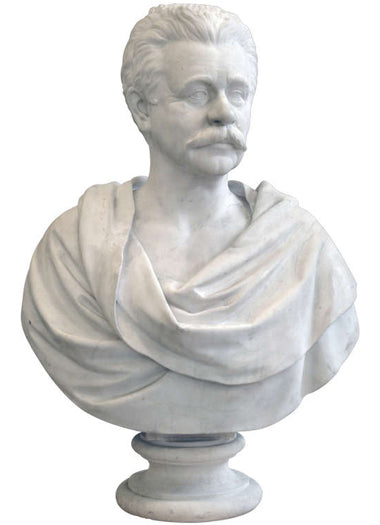A CARVED WHITE MARBLE BUST OF A GENTLEMEN BY RANDOLPH ROGERS, ROME 19TH CENTURY
$14,500.00
Behold the timeless elegance encapsulated in the Carved White Marble Bust of a Gentleman, a masterpiece crafted by the skilled hands of Randolph Rogers. This exquisite work of art, dating back to circa 1850, stands as a testament to the classical grace and artistic finesse of its renowned creator.
The bust captures the refined visage of a distinguished gentleman, expertly carved from pristine white marble. Each delicate feature is meticulously rendered, reflecting the craftsmanship and attention to detail characteristic of Randolph Rogers' work. The subject's countenance is a testament to the sculptor's ability to convey not just physical likeness but also the inner essence and character of the portrayed individual.
The artist's signature, proudly inscribed as "Randolph Rogers, Rome," further solidifies the provenance of this magnificent creation. Having originated from the artistic hub of Rome, the bust carries with it the legacy of classical artistry that defined the mid-19th century.
As you gaze upon this captivating sculpture, you are transported to an era where marble became a medium for immortalizing the beauty and dignity of individuals. The Carved White Marble Bust of a Gentleman by Randolph Rogers invites admiration for its aesthetic brilliance, embodying the grace and sophistication of a bygone era. This masterpiece serves as a timeless testament to the enduring allure of classical portraiture and the artistic legacy of one of the esteemed sculptors of the 19th century.
Height: 31" (78 cm)
Width: 21" (53 cm)
Depth: 15" (38 cm)







